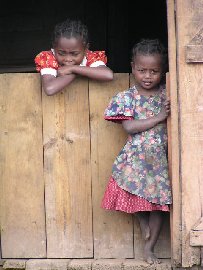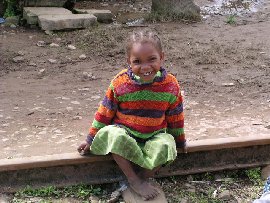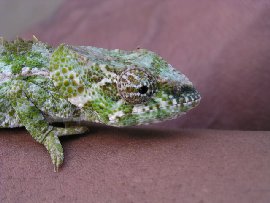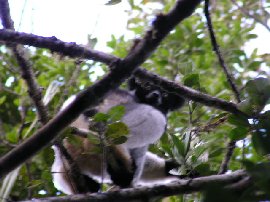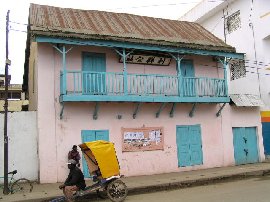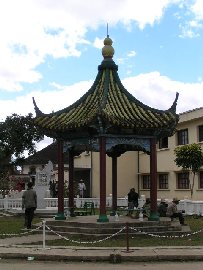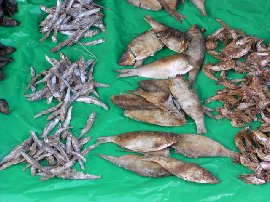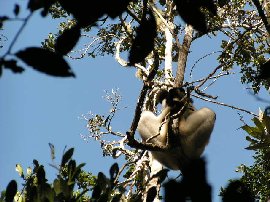
CHASING THE INDRI
Journey To Beauty & Chaos In Paradise
Islands
Madagascar:
Erotic Tombs, Tribal Warriors & Bull Fights In The Great Red Island
Part
IV: BACK TO TANA & PERINET
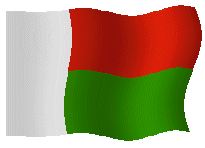
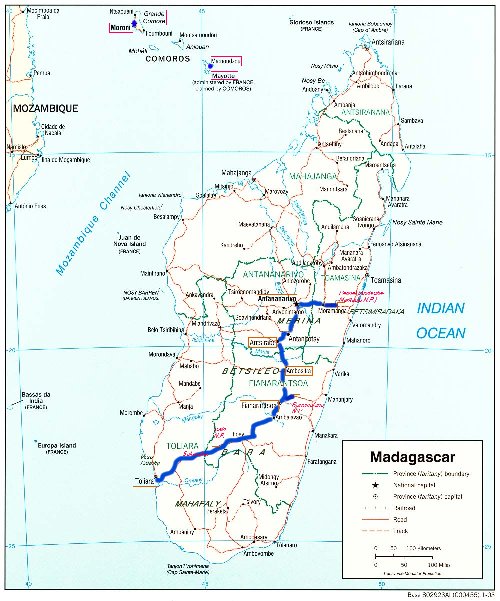
Tan Wee Cheng, Singapore
(July 2003)
We
spent a night in Tana and then visited Périnet Special Reserve of the
Andasibe-Mantadia National Park. We
spent the afternoon walking around without seeing the one-meter tall indri with
their incredibly white-and-black fur, the greatest of the lemur. What a disappointment! We
returned the next morning and this time we found two families of five
individuals each, each controlling a territory of about 15 hectares.
The indri is famous for their early morning haunting calls, audible 3 km
away, which initially frightened early European visitors who thought the place
might be haunted.
After
Périnet, we returned to Tana and visited the old Rova of Ambohimanga in the
countryside. This is an overpriced
World Heritage Site (US$5 to enter), with an dilapidated and half-bare palace
surrounded by a simple wall. The
larger and newer Rova of Tana has been burned down and all that remained is this
one on the Blue Hill.
----
Then
it’s back to Tana for two nights, before we flew to Mauritius and then
Singapore. Walking around Tana and
seeing the mass poverty and pathetic state of affairs around me, I am reminded
of the story of the indri, known to the Malagasy as Babakoto.
The Malagasy people believe that there were once a man named Koto and his
son who left the village to collect honey but failed to return.
The villagers sent a search party which couldn’t find the two but found
two indris looking at them from the trees.
The villagers rationalised that the two had probably turned into indris
and hence called the indris Babakoto meaning “Papa Koto”.
Due
to the supposed human origins of the indri, eating the indri is a fady, or
taboo. For a long time, the fady
had helped the indri to survive. The
indri used to be found all over the Highlands as well as the East Coast.
They say that one used to hear the cry of the indri from Toamasina to
Tana. Now the indri is seriously
endangered, found in large numbers only in the Périnet Special Reserve.
Population pressure, deforestation and loss of respect of old cultural and
traditional norms have led to the destruction of Madagascar’s natural
environment, caused erosion and threatens the country’s agricultural sector as
well as long term development and sustainability.
Corruption and political instability have also made this country
unattractive for foreign investment. The
fate of Madagascar is linked to that of the indri.
For how long will the indri continue to cry from the forests of Périnet?
END OF STORY
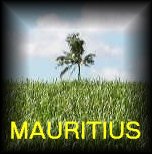

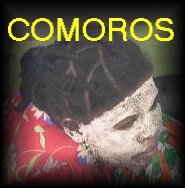
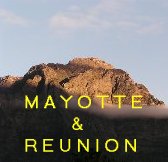

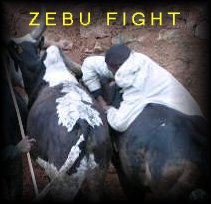
Caveat :
The tales and opinions expressed on this site are
the author’s and by their very nature, personal and opinionated.
You may not agree with them and you are welcomed to voice them by emailing
to the author. However, if the intention is to pick
a fight, such efforts should be directed to soc.culture newsgroups. The
author will not entertain anyone who furl insults and vulgarities. The
names of individuals mentioned in this site have been changed to maintain
their privacy.
 Send
your comments to Tan Wee Cheng, Singapore
Send
your comments to Tan Wee Cheng, Singapore
 Back to Homepage of CHASING THE INDRI
Back to Homepage of CHASING THE INDRI
 Back to the Main Homepage of Weecheng.com
Back to the Main Homepage of Weecheng.com

